Giovanni Da Verrazzano Discovers Staten Island, 1524.
Sailing for the King of France in search of a route to the East Indies, Verrazzano sees what is now Staten Island as he entered New York Harbor on April 17, 1524.
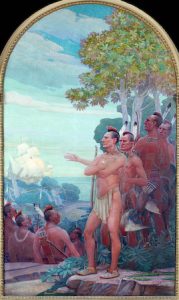
Henry Hudson Anchors Of “Staaten Eylandt”’ In 1609.
On September 2, 1609, the Englishman Henry Hudson sailed into the Harbor under the Dutch flag. A mate of Hudson’s writes about the land as “…pleasant with grass and flowers and goodly trees….” Native Americans look on with conflicting emotions.
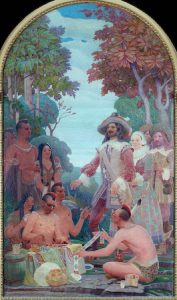
Cornelius Melyn Trades With The Indians.
The Dutch West Indies Company granted Melvin a significant portion of Staten Island in 1641. However, between 1641 and 1655, colonies are continuously destroyed by Native Americans in conflict over the policies of the Dutch Governor General.
The British Fortify Fort Hill, 1776.
Under General William Howe, 32,000 British troops landed on Staten Island in July 1776 and proceeded to fortify critical locations. The troops find themselves amongst friends as the Island is intensely loyal to King George III.
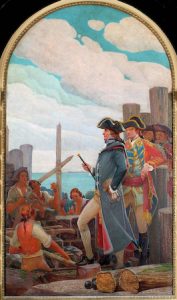
Conference At Billopp House, Tottenville, 1776.
On September 11, 1776, the British meet for the first and only time with representatives from the Continental Congress: Edward Rutledge, Benjamin Franklin, and John Adams. The British attempted to bring about a negotiated peace to the Revolutionary War. Unfortunately, negotiations fail, and the war continues.
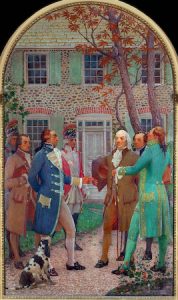
Fight At St. Andrew’s Church, 1776.
St. Andrew’s Church was a gift from Queen Anne to the American colonies. It is used during the American Revolution as barracks by the British troops. This mural portrays the second of two skirmishes at this site. The dying soldier is a unique image in this narrative series.
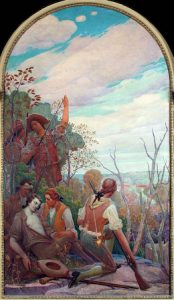
British Troops Evacuate Staten Island: December 5, 1783.
After the surrender of the British at Yorktown in 1781, it took another two years and the Treaty of Paris before the British finally left.
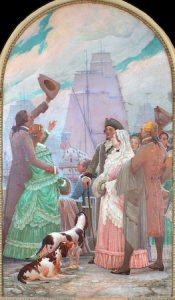
Governor Tompkins Erects Forts Richmond And Tompkins, 1812-1814.
With the threat of impending war in 1812, New York Governor Tompkins fortified the inadequately protected Narrows of New York Harbor.
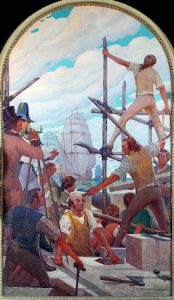
Stage Coach To Richmond Stops At Black Horse Tavern.
This mural in New Dorp portrays the 17th-century tavern as it might have been in the early 1800s. It was demolished in 1934. The signboard at the upper left is preserved at the Staten Island Historical Society Museum in Historic Richmond Town.
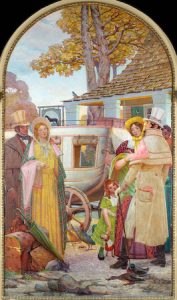
First Railroad: Clifton To Tottenville,
1860. June 2, 1860, marked a new era in Staten Island transportation: the advent of the first steam railroad, an enterprise of Commodore Cornelius Vanderbilt and his associates. The wood-burning locomotive pulled passenger cars from Vanderbilt’s Landing (Clifton) to Tottenville. Five daily trips are made during the week, and three on Sunday.
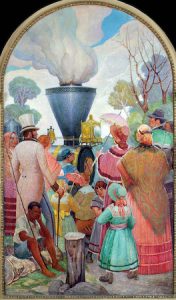
Bayonne Bridge Under Construction, 1928-1931.
After three years, one month, and 28 days of construction, the $13 million Bayonne Bridge connecting Staten Island to Bayonne, New Jersey, opened on November 15, 1931. Declared “The most beautiful structure of steel in 1931” by the American Institute of Steel Construction, it is presently the second longest steel arch bridge in the world (the longest is the New River Gorge Bridge, New Fayetteville, West Virginia, built-in 1971).
